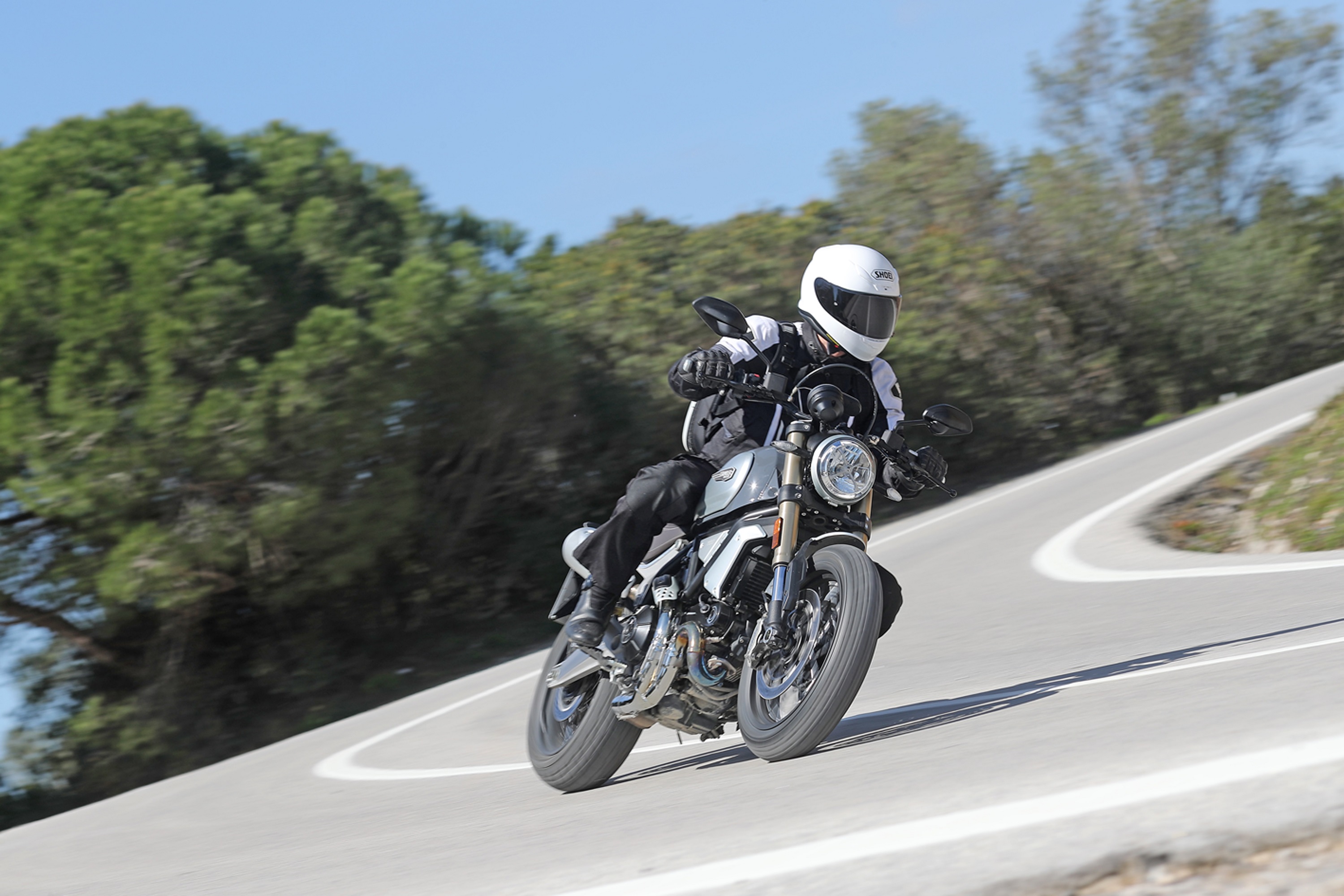
I got a short day ride on the Ducati Scrambler 1100 Special in the hills overlooking the coast of Portugal.
Some people buy motorcycles based on a spec sheet. Horsepower, weight, expensive suspension components. Those people are unlikely to buy a BMW R nineT Urban G/S or a Ducati Scrambler 1100 Special.
Some people buy a motorcycle for far more personal reasons. They see it, they fall in love, they have to have it. The motorcycle whispers to them of adventures they could have, or a slightly more exciting, more interesting version of themselves that they could be… with just a little help.
Motorcycles like this BMW and Scrambler speak to our emotional side. But they are still motorcycles. We still have to ride them, and if they don’t work, if they aren’t fun to ride, the dream sours and the whispers go silent. I had the chance to ride these two very stylish bikes in recent months and here’s how they worked.
Honoring history
Both the BMW and the Scrambler pay homage to history, though that history is far more significant in the BMW’s case. The Urban G/S, one of five models in BMW’s Heritage line, very clearly pays tribute to the landmark R 80 G/S Paris-Dakar model, the motorcycle that essentially invented the adventure-touring category that continues to grow more popular 30 years later. I still remember running into a British motorcycle messenger in Central America in 1991 who was riding one on an around-the-world trip. That original G/S brought together rugged reliability, long-haul competence and bad-roads capability in a package that hadn’t existed before. It didn’t take off immediately, but the impact has been long-lasting.
The Ducati Scrambler 1100 also pays tribute to past models. In the 1960s, Ducati made scramblers in 250 cc, 350 cc and 450 cc sizes. Three years ago, Ducati created the Scrambler brand, a new line with a different identity aimed at those people who don’t buy based on a spec sheet and are more likely to value style and experiences over lap times or peak horsepower. Scrambler has been a success, selling 46,000 bikes in its first three years, and for 2018 Ducati added to the 400 cc and 800 cc models with the new Scrambler 1100 line.
BMW’s Heritage line, now consisting of five R nineT models, and Ducati’s Scrambler brand, now with 11 models, both tap into the one shared style that works with both young hipsters ready to move on past chopped-up home-brew café racers built on old 1970s Honda CBs and older Baby Boomers who remember when just about all motorcycles looked something like these. The thing is, neither the R nineT line nor the Scramblers (especially the 1100 Scramblers just introduced for 2018) are cheap. Not even close, with the BMW costing $12,995 in the United States and the Ducati Scrambler going for $14,295. For those prices, you expect style and quality components, but you also should demand a motorcycle that works well.
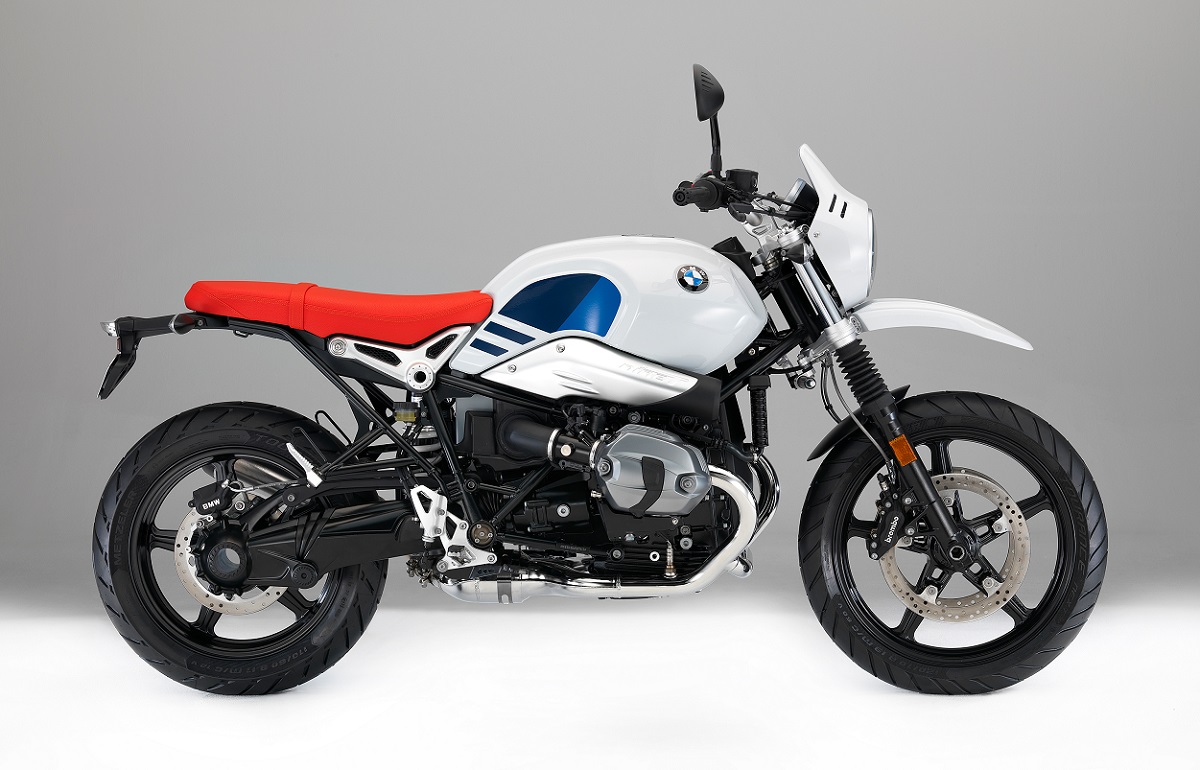
The BMW R nineT Urban G/S pays homage to the original adventure-tourer but in stock form it’s better suited to the “urban” part of its name.
The BMW R nineT Urban G/S
The R nineT line uses the previous-generation BMW boxer twin engine that’s just a little more raucous than the new boxer with liquid-cooled heads. I’ve ridden the R 1200 RT touring bike with the new engine and the Urban G/S with the older engine, and in both cases the character of the powerplant is the right match for the motorcycle it’s in.
With 110 horsepower, the R nineT Urban G/S easily outpowers its Italian competition. The boxer pulls with a rorty enthusiasm from down low and still manages to produce an enjoyable top-end follow-through, with power maxing out at 7,750 rpm, according to BMW. The reported torque peak is 86 foot-pounds at 6,000 rpm. With the weight staying under 500 pounds, this makes for responsive performance that’s easy to tap, perfect for the Urban in the bike’s name.
Speaking of Urban, the G/S comes stock with cast wheels and street tires. Knobby tires and spoked rims that don’t require you to put tubes in those tires are available as an option for those who are adamant about mimicking the traditional adventure-touring look or who — gasp — actually want to take this styling exercise down a dirt road or two. The BMW is capable, within reason, but BMW also offers the R nineT Scrambler for those who want to go the dirty route while staying within the Heritage family. (Serious, modern adventure-touring riders will go straight to the R 1200 GS, of course.)
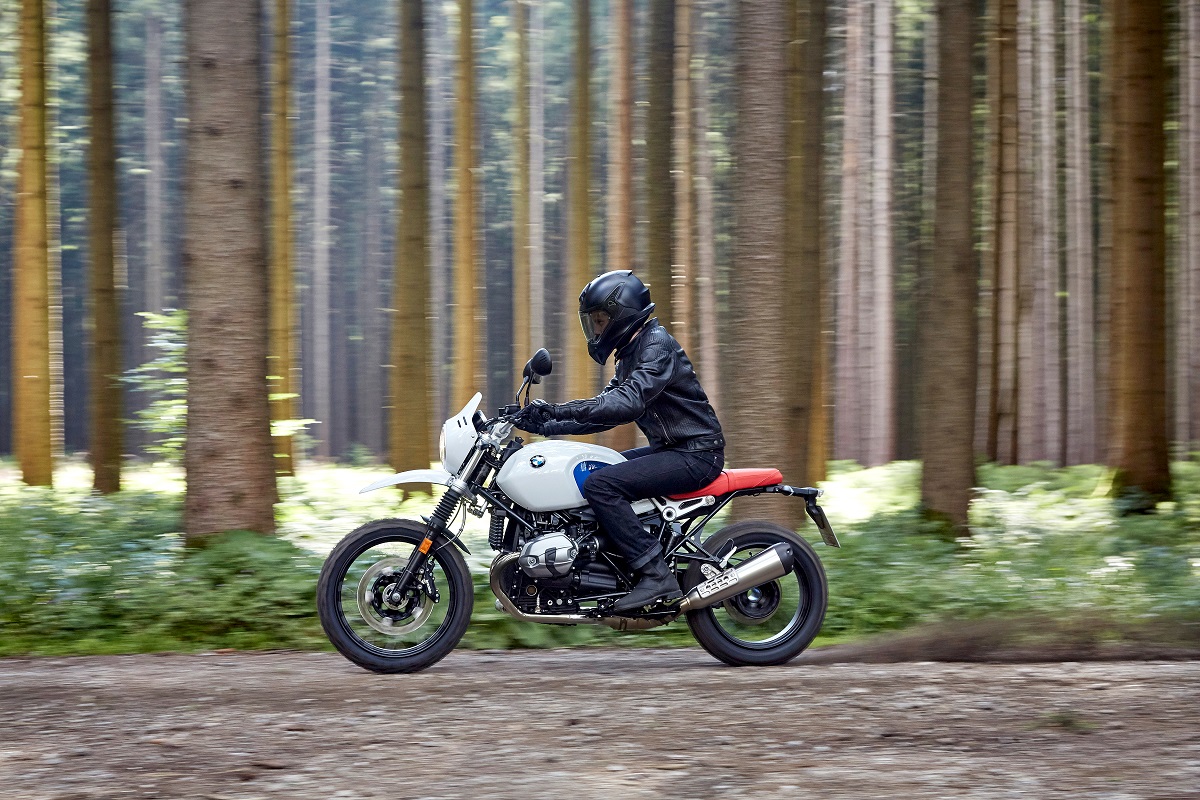
Sure, you can take the BMW R nineT Urban G/S into the woods. It would be a shame to mess up that pretty paint, though.
I rode the G/S in that knobby-tired configuration and it handled surprisingly well on the street, without the heaviness some riders complain about on the R nineT Scrambler. But I would still prefer the stock setup with street tires. I don’t think I’d ever be tempted to take the G/S down a dirt road.
The obvious reason for that is weight. I like small bikes off-road. But also, it would be a shame to drop this bike in the dirt. The white paint, high front fender, and red seat draw the mind back to the original G/S of three decades past. The looks are almost all of what separates this model from the thousand-dollar-less-expensive R nineT Pure. In the Urban G/S name, the “Urban” honestly tells you this motorcycle’s mission while the “Gelände/Straße” part is mere tribute to an ancestor. This bike would definitely be all Straße and no Gelände if I owned it.
So yeah, it’s a styling exercise. But if that exercise works for you and you love the way it works, it’s also a very satisfying street motorcycle.
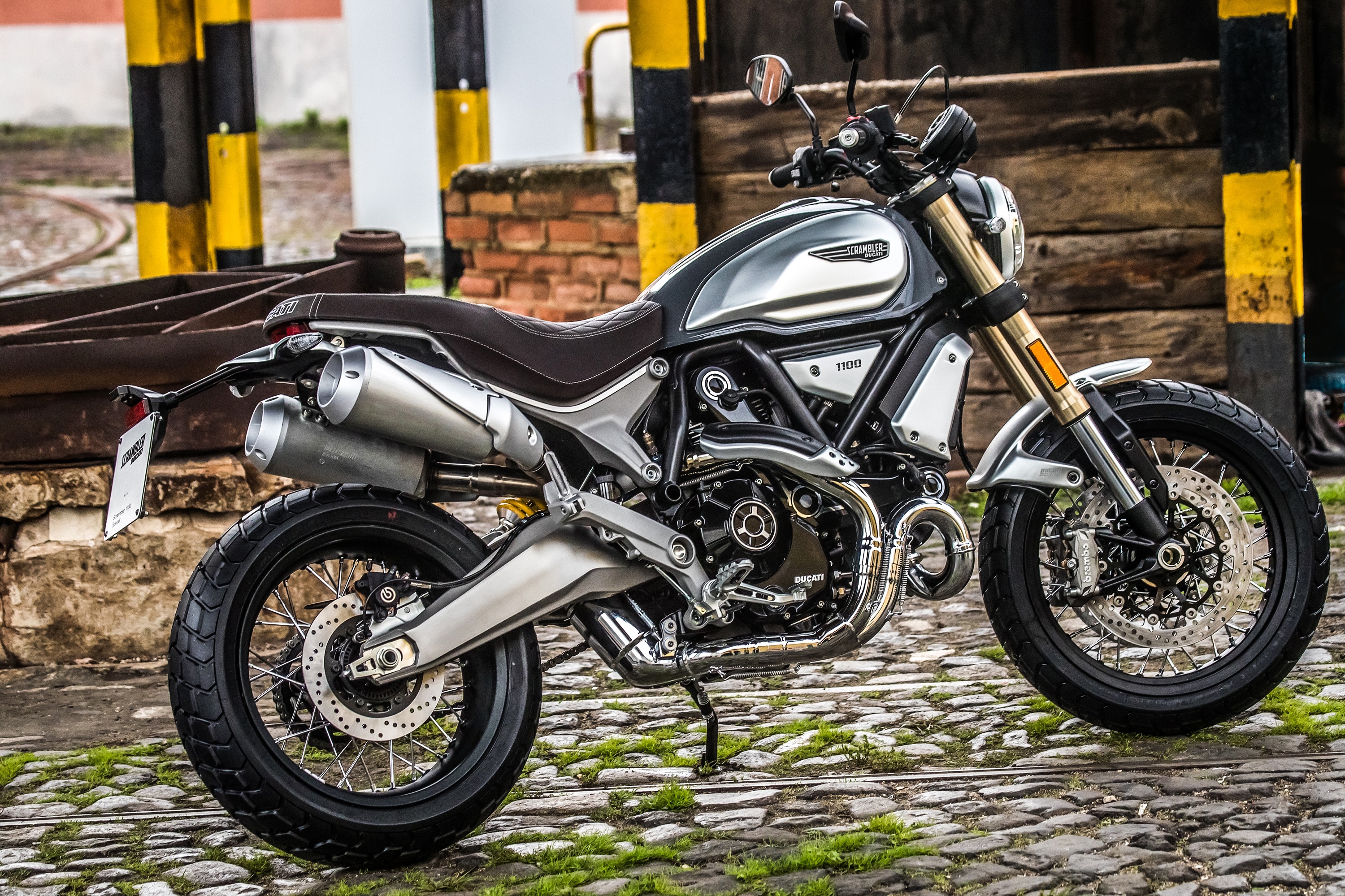
The Scrambler 1100 Special brings a new level of electronics to the retro class.
Ducati Scrambler 1100 Special
Beyond style, one appeal of some of the popular retro models to emerge in recent years is their use of nicer finishes and metal over plastic to provide a feeling of quality. One brand even uses the words “authentic materials” to describe it. Ducati emphasized that the Scrambler 1100 Special only has three significant plastic parts.
The Special is powered by an updated version of the 1,079 cc air- and oil-cooled V-twin previously seen in the Monster. With a claimed peak of 86 horsepower at 7,500 rpm, the Scrambler definitely does not feel as strong as the BMW, despite being about 30 pounds lighter. But again, these are not spec-sheet motorcycles, and there are reasons why some riders will prefer the experience of riding the Scrambler. It doesn’t have a torque curve as much as it has a torque table top. Peak torque of 65 foot-pounds occurs at 4,750 rpm, much lower than the BMW’s torque peak, but more importantly the output varies by no more than a couple of foot-pounds from about 4,000 rpm up to 6,500 rpm.
Riding the motorcycle feels like just what you’d expect after seeing that chart. Just roll on the throttle anywhere from 3,000 rpm up and the Scrambler just pulls. Revving beyond 6,500 rpm was not very satisfying to me, as any additional acceleration was outweighed by vibration through the seat and foot pegs. Fueling is spot on and, combined with the comfortably upright riding position, neutral handling and the light hydraulic slipper clutch, makes for a motorcycle that is easy to ride, even though it is by no means a beginner’s bike.
What really sets the Scrambler apart from the competition is the Inertial Measurement Unit that senses lean angle and incorporates that into the traction control and ABS. This system, from Bosch, is found on some high performance bikes, but not on any of the retro competitors, including the BMW R nineT Urban G/S. The Scrambler 1100 also has four levels of traction control (and can be turned off) and three rider modes, which Ducati calls Active, Journey and City in this case. Unlike some other motorcycles, switching to the Active mode increases responsiveness but does not cause a twitchy throttle. Fueling remains sweet. City mode cuts power to 75 horsepower and would be most useful in the rain.
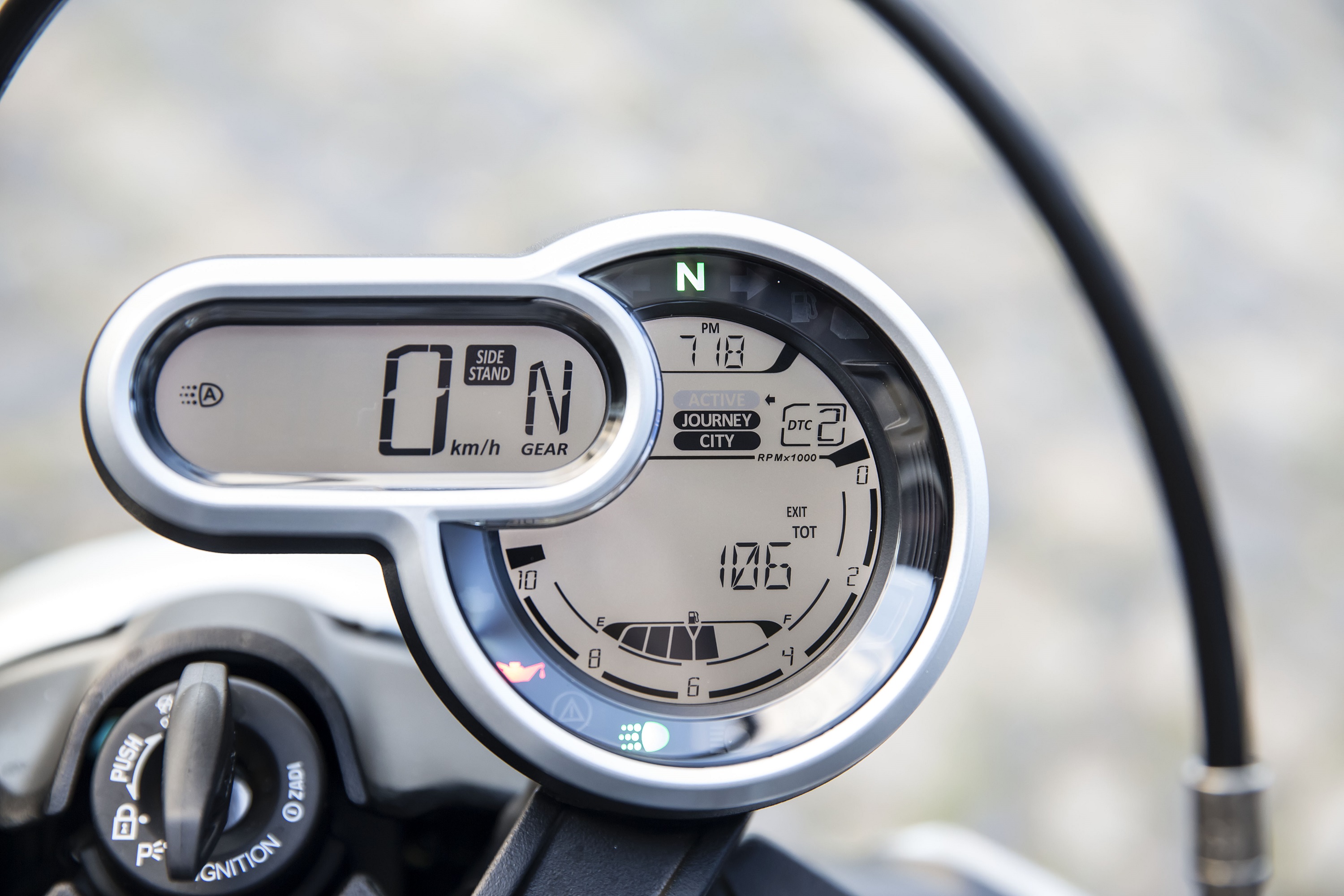
The display on the Ducati Scrambler 1100 is complete and functional, except for the hard-to-read bar graph tachometer at the bottom. It’s also much more nicely styled than the BMW’s gauge.
The BMW almost goes too far in the retro direction with its single, round gauge. You get a traditional analog speedometer and a small LCD display. The Ducati Scrambler 1100 Special displays a lot more information and in a far more stylish manner. My only quibble is that the tachometer is hard to read. It’s a bar graph that curves along the bottom of the round dial. At least the display gives you the option of a numeric readout of engine speed, if you really want to know. And the nature of the engine makes rpms less than critical. The gauge is a small thing, but it’s something you look at dozens of times every ride. The BMW’s is surprisingly plain while the Scrambler’s is jewel-like.
Conclusion: So, BMW or Scrambler?
I’m not enough of a “form over function” guy to be the target for either of these models. I appreciate the upgraded finishes and attention to styling, and I like the way they look (though personally I prefer the looks of the Scrambler 1100 Special, among these two, and probably the original R nineT among the BMW line). But in the end I’m too likely to look at other non-retro models at similar or lower prices that provide more performance or versatility. Something I could ride across a few state lines (just try to find a place to strap even an overnighter’s amount of luggage on the Scrambler).
But that’s the thing. BMW and Ducati make plenty of other motorcycles that are more practical. These two are for people who look at a motorcycle and fall in love. Or don’t. And that makes their decision. If I decided I had to have a retro, I’d probably end up with an R nineT Pure instead of either of these, or else a Kawasaki Z900RS. But me telling you which of these should appeal to you more is like me telling you which gender you should be sexually attracted to. You already know, and you don’t have to consult a spec sheet to remember.
The good part is that underneath the style, both are solid motorcycles. So if you can afford the price of admission, whichever way you go, you’re unlikely to wake up with morning-after regrets.
